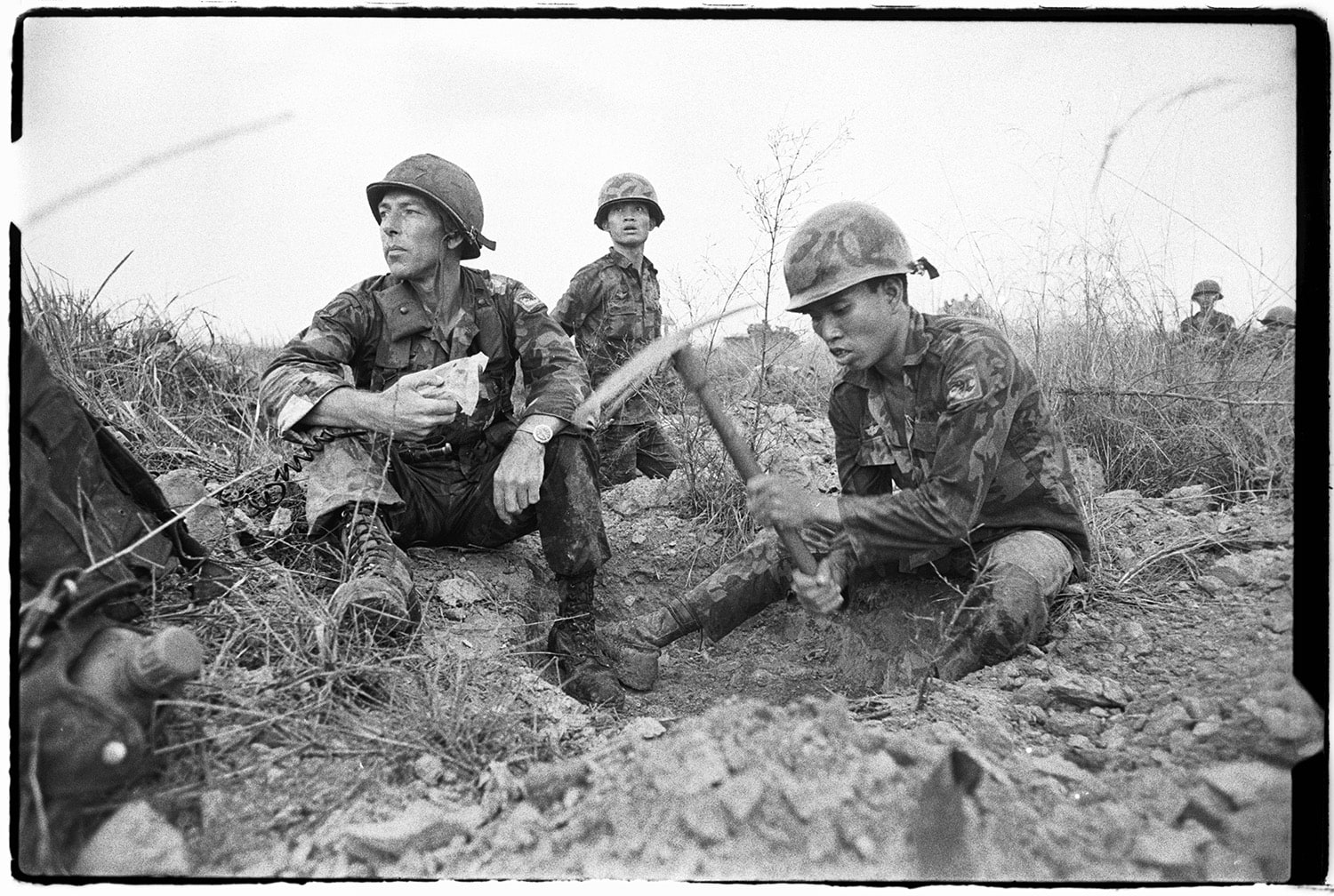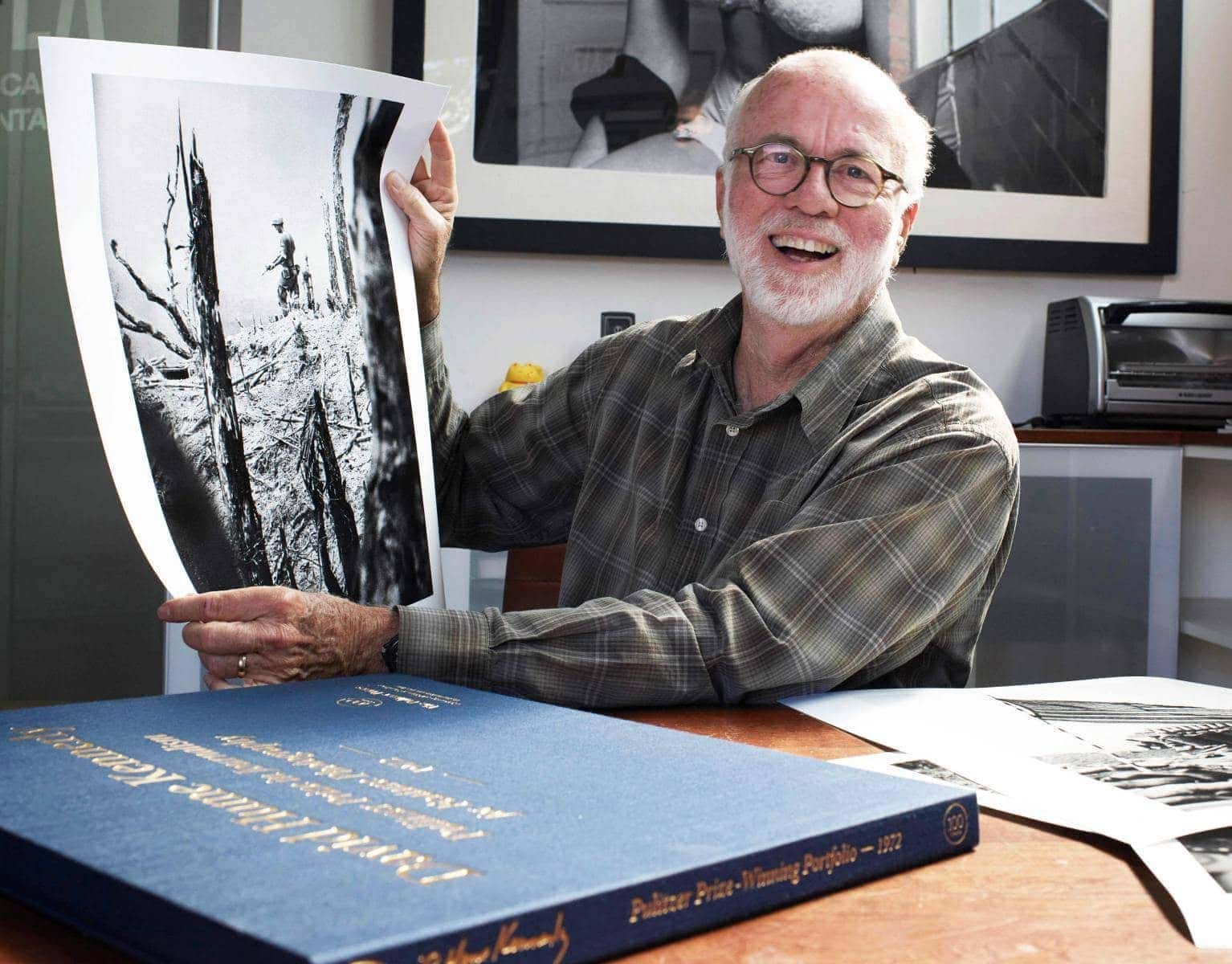Fifty years ago today, May 1, 1972, a message reached me in Saigon that changed my life. It said I had just won the Pulitzer Prize in Journalism for Feature Photography. Here’s an edited version of the story as recounted in my book Shooter published in 1980.
I got the call at 4 a.m. from Saigon United Press International news bureau chief Bert Okuley. He said, "You'd better come down here and have a look at this message.” His voice was grave. All I could think was there had been a problem with the photos I sent out earlier taken by a freelancer of the North Vietnamese offensive in Quang Tri near the DMZ. I ran down the stairs from my apartment to Okuley's office. "Look at this," he said, handing me a sheet of paper torn from the wire machine:
“KENNERLY HAS WON PULITZER FOR FEATURE PHOTOGRAPHY”
The cable read (in all caps): "01170 SAIGON-KENNERLY HAS WON PULITZER FOR FEATURE PHOTOGRAPHY, WHICH BRINGS CONGRATS FROM ALL HERE. NOW NEED EFFORT SOME QUOTES FROM HIM AND PINPOINT HIS LOCATION WHEN ADVISED FOR SIDEBAR STORY, BRANNAN/NX CABLES."
I was dumbfounded. I didn’t believe it. How could I have won my profession’s highest award when I didn’t even know I was nominated? I thought it was a mistake or a prank. Bert sent a message back to New York, asking for clarification: "02054 EXHSG BRANNAN'S 01170 ARE YOU KIDDING? IF SO IT ISN'T MUCH OF A JOKE. IS THERE A PULITZER AWARDED TO A UNIPRESS PHOTOG AND IS IT KENNERLY? OKULEY." At that moment the wire machine decided to break down and we were cut off from the world. I hadn't had a cigarette for months, but right then and there I started smoking again.
Three hours and many cigarettes later, the wire machine finally came back to life and a flood of messages spewed out. The first one said, "01181 OKULEYS 02054 NO KIDDING AND CAN YOU REACH KENNERLY FOR SUDDEN COMMENT NEED TO KNOW WHERE HE WAS WHEN HE GOT THE NEWS. WOOD/NX CABLES."
The Pulitzer Prize is the premier award in the news business, something almost all photographers and writers dream of winning. Without my knowledge, UPI’s top photo editor Larry DeSantis had submitted a portfolio of pictures I'd taken the year before in Vietnam, India, Cambodia, and at the Ali-Frazier championship fight right before I left for Saigon. There were eleven photos, all taken in 1971.

The citation from the Pulitzer committee read: "For an outstanding example of feature photography, awarded to David Hume Kennerly of United Press International for his dramatic pictures of the Vietnam War in 'They also noted that "he specializes in pictures that capture the loneliness and desolation of war." The representative picture the committee selected from my portfolio was the one I had taken of a G.I., his weapon at the ready, walking over the scarred landscape of a god-forsaken place the soldiers had given the improbable name of LZ Hot Lips.

That night I lay in bed staring at the slowly rotating blades of the ceiling fan while the question circled in my mind: "What does it mean?" I decided it meant I had to go back out in the field and take pictures. My opportunity came the very next day, when Dirck Halstead, my close friend and mentor, showed up to cover the ongoing North Vietnamese offensive for Time Magazine.
Four years earlier Dirck had convinced the UPI executives in New York that a young photographer named Kennerly who was working for them in Los Angeles should be brought to New York. It was a big step up. Not long after I arrived in the city I began getting important assignments thanks to him. Halstead was UPI’s star shooter, and I was grateful that he chose to share some of the best jobs with me.
"Where's the action?" Dirck asked.
“ An Loc, the NVA have cut the place off," I told him. An hour later we jumped into an old ’58 Ford from the Caravelle Hotel and headed toward the action. Leon Daniel, a UPI newsman and one of the bravest correspondents I had ever met, joined us. (Leon was shot in the leg during the Korean War and still limped because of his old wound.) When we got to the area about 30 miles from Saigon we stopped to photograph South Vietnamese armored vehicles. Leon took a photo of me and Dirck in front of one.

All was quiet, but not for long. At that moment a bullet pinged off the pavement near Leon's good leg. We all hit the deck near our cAR. Two other newsies who had arrived minutes behind us in a white Toyota, decided to depart. A B-40 rocket blew up where they had been seconds before. We were crouched down near our car, but it was a target.

We told our driver to take off, and he high-tailed it. We ran toward soldiers who were returning fire. Incoming mortar rounds were blowing up all around us. We were surrounded.

Intense fire from the NVA kept us pinned down. A dozen or more ARVN troops were killed all around us and many were wounded during the firefight. One soldier lay near me bleeding to death, he had been shot in the crotch. A medic bandaged him up.

Communist troops were so close we could see them running across the road. One South Vietnamese soldier pointed in their direction and started screaming, "Beaucoup V.C! Beaucoup V.C!" Sgt. Ronald MacCauley, a U.S. advisor to the Vietnamese shouted, "Shoot the fuckers, don't just yell at them!" (MacCauley was awarded a Silver Star for his participation in the battle for An Loc for his heroic actions three weeks after we were with him).

We'd been pinned down for more than two hours when the first air strikes called in by Sgt. MacCauley and a Vietnamese major came in on top of the North Vietnamese combatants. A giant piece of shrapnel from one of the exploding bombs whizzed over our heads. It had been raining and we were covered with mud. Dirck got a shot of me that I later used on the cover of my book. It definitely caught the moment! I crawled over to Dirck and asked if this was what he'd had in mind for action. Always cool under fire he calmly said, “Can’t wait to have a drink at the Melody Bar tonight.”

After being heavily blasted from the air the North Vietnamese finally withdrew, and things quieted down. Wet and shaken, we were wondering how we were going to get our asses out of there. In the distance we heard the sound of a car heading our way fast. He’s back! Our driver screeched to a stop, and yelled, “Need a ride?” He was laughing as we scrambled aboard. He got a big tip for that mission.
Back at the Melody Bar that night Dirck, Leon, and I tossed back a few and marveled at how close we’d come to getting whacked. Dirck apologized for being the catalyst that almost got me (and him) killed. He hoisted his cognac and said, “Oh, by the way, congrats on winning the Pulitzer.” We laughed and clinked glasses.

To celebrate the 50th Anniversary of me receiving the Pulitzer Prize in Journalism for Feature Photography on May 1, 1972, I’m making the winning portfolio of those pictures available for purchase in a boxed set. It will include the photo Dirck took of me in combat the day after I won.
https://kennerly.com/archive-deck/new-pulitzer-prize-portfolio
Contact me at pix@kennerly.com for details!


Leave a Reply
You must be logged in to post a comment.